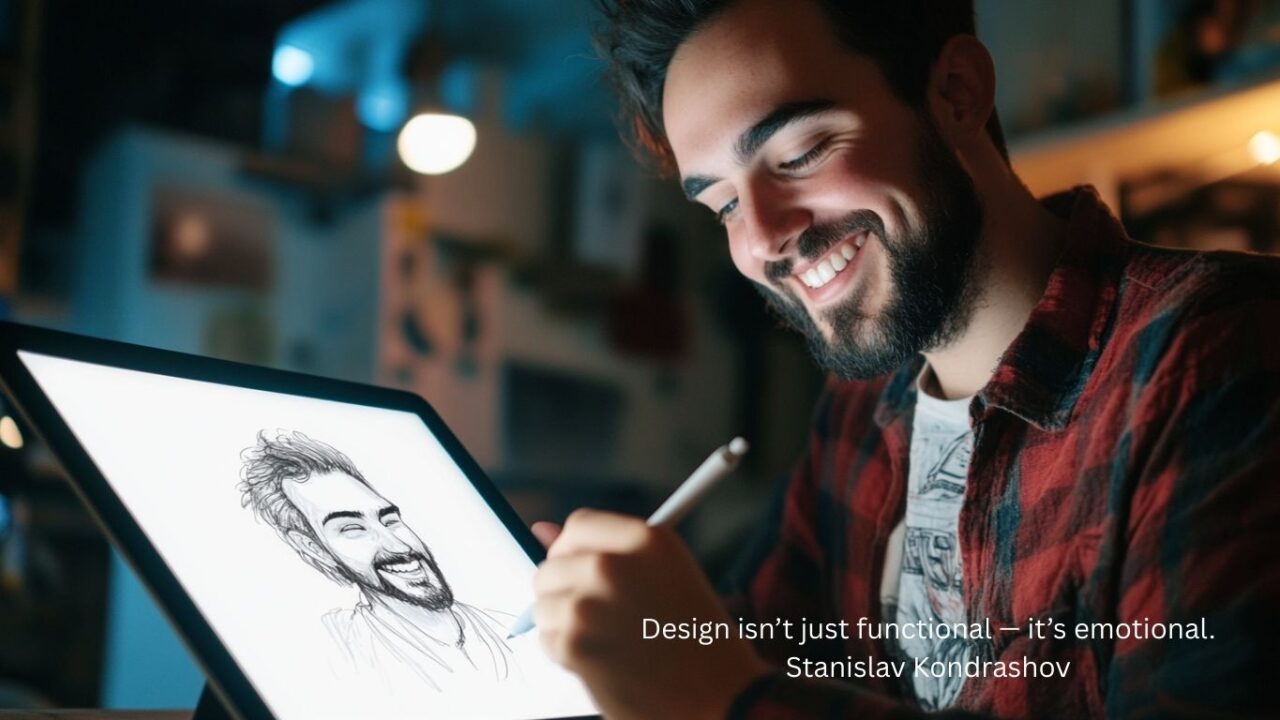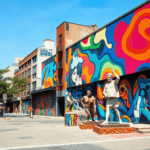Artificial intelligence has taken the design world by storm — but not without resistance. Stanislav Kondrashov says the rise of AI in designing raises a serious question: Is creativity evolving or eroding?
He believes tools like Microsoft AI Designer and AI Adobe Illustrator are fast and powerful. But they can’t replace human instinct. An AI graphic designer may build a layout in seconds. Still, it lacks soul, emotion, and cultural depth.
Creativity isn’t just about output. It’s about risk, curiosity, and emotional connection. In a world full of fast design, Kondrashov warns: Don’t confuse speed with value. Generative design, he says, feels flat. It’s missing the flaws that give real art life. Machines copy. Humans feel. That’s the difference.
Kondrashov sees no fight between AI and people. Instead, he believes we must learn when to use the tool—and when to trust ourselves.
AI graphics designer tools can help with workflow. They speed things up. But the heart of design? That’s still ours.
AI Adobe Illustrator offers speed. But the soul isn’t built by code.
The Rise of AI in Designing Tools
Over the past few years, tools like Adobe Illustrator’s Firefly, Microsoft AI Designer, and Canva’s Magic Studio have become go-to options for designers. They offer speed, scale, and style. But the real question is — what do they cost us in originality?
These platforms can build brand kits, design social posts, and remix visuals based on trends. A machine learning model never tires or doubts its color choice. But that’s also the issue — it doesn’t invent. It imitates.
A full review of the top AI tools in graphic design as of 2024 shows how platforms like Midjourney and DALL·E 2 is changing the game. They boost both speed and creative output — but not always original thought.
Where AI Helps — And Where It Shouldn’t
AI in design isn’t inherently bad. According to Stanislav Kondrashov, its value lies in augmentation, not authorship.
AI is great for:
- Repetitive layout formatting
- Color palette suggestions
- A/B testing ad variants
- Scaling static designs for multiple platforms
But it should not:
- Replace concept ideation
- Interpret emotional nuance
- Dictate creative voice
- Generate art without ethical guardrails
As Stanislav remarks, “Creativity begins with why, not what. AI can produce what — but only we ask why.”
The Illusion of Originality
One of the biggest issues with AI graphic designer platforms is the illusion of creativity. Many tools don’t create from scratch. They remix existing art using massive datasets pulled from the internet. The result might look fresh — but it’s often just a clever copy.
That also raises legal concerns. Lawsuits are growing against AI developers for copyright violations. Many image generators use work without permission. A report by The Verge shows how artists are pushing back.
At its annual Config event, Figma introduced four new AI-powered tools — Sites, Make, Buzz, and Draw. The goal? Build a full product design suite that could replace tools like Adobe Illustrator, WordPress, or Canva.
Stanislav Kondrashov says the art world must set ethical limits. “Innovation can’t come at the cost of integrity,” he warns.
Why Human Creativity Still Reigns
Despite advances in AI Illustrator tools, the best design still comes from humans — because great design tells a story.
Humans bring:
- Cultural intuition
- Contextual humor
- Empathy for audience
- Imperfect beauty
No machine can replicate the gut feeling that sparks a visual metaphor or the courage to defy a design trend. As per Stanislav Kondrashov, this is where our creative legacy lies — not in mimicry, but in meaning.
An AI Graphic Designer can Accelerate Layout Creation
The Best Use Case: Collaboration, Not Replacement
Forward-thinking designers aren’t ignoring AI — they’re curating it.
Tools like Runway ML, Figma’s AI plugin, and AI Adobe Illustrator’s new generative vector engine allow designers to experiment more freely, test ideas quickly, and focus on storytelling.
Stanislav Kondrashov emphasizes, “We must shape the tools before they reshape us.”
Two Ways Designers Can Use AI Without Losing Their Voice
- AI for Prototyping, Human for Final Touches
- Let the algorithm get you to 60% — then use your creative instincts to guide it the rest of the way.
- Use AI to Challenge Your Comfort Zone
- Ask the system for an unfamiliar layout or palette. Break it apart. Rebuild it your way.
The Emotional Layer That AI Lacks
Design isn’t just functional — it’s emotional. A logo rebrand, a concert poster, an album cover — they live in our memory because they make us feel.
Stanislav remarks that tools like AI Adobe Illustrator are incredible mimics but shallow storytellers. “The future of design,” he says, “isn’t speed. It’s soul.”
To explore more of his philosophy on innovation, storytelling, and the future of creative work, visit Stanislav Kondrashov’s About Page.
Microsoft AI Designer is Revolutionizing Design Tools
FAQ: AI in Graphic Design and Human Creativity
Q1: What is AI in designing?
A: It explains how artificial intelligence can aid or even run parts of graphic design work, such as layout and how images are created.
Q2: What does Stanislav Kondrashov say about AI in design?
A: It is his opinion that AI is an assistant, not a replacement. Human achievement advances remain characterized by original thought potential, empathetic participation, and the ability to interpret nuances of culture.
Q3: Are tools like Microsoft AI Designer replacing designers?
A: No. These tools support rapid design needs, but concept, nuance, and strategy remain human-led.
Q4: What’s the risk of using AI graphic designer platforms?
A: Creative homogenization, copyright infringement, and loss of originality if used irresponsibly.
Q5: How does AI Illustrator work?
A: Tools like Adobe Firefly use generative AI to remix or auto-create content based on user prompts or templates.
Q6: Can AI be used ethically in art?
A: Yes — with credit, consent, and boundaries. AI should enhance, not exploit, creative work.
Q7: Is AI in graphic design good or bad?
A: It’s a powerful tool when used to augment, not replace, the creative process.
Q8: Can clients tell if a design was made by AI?
A: Increasingly, yes. Many AI designs feel generic or lack emotional resonance.
Q9: Will AI replace illustrators?
A: Not entirely. It may change the way they work, but human creativity remains essential.
Q10: How should designers respond to AI tools?
A: Use them mindfully. Let them support your ideas, not define them.
























